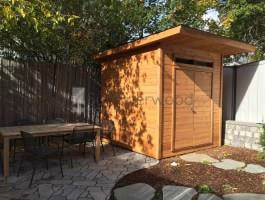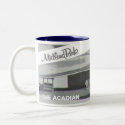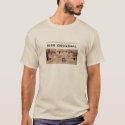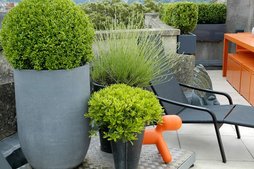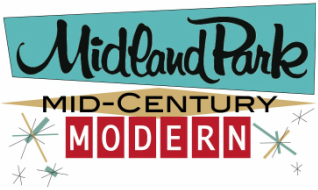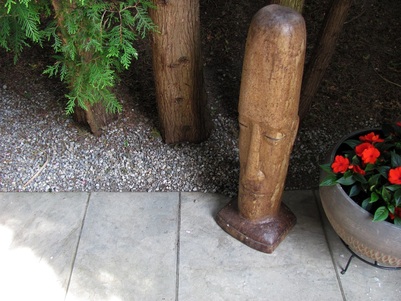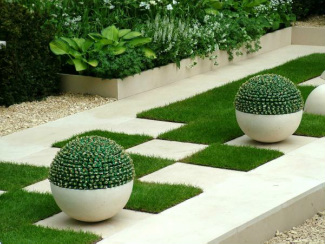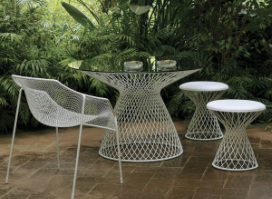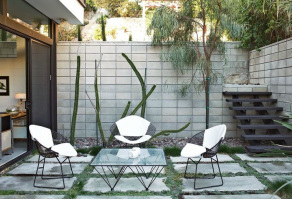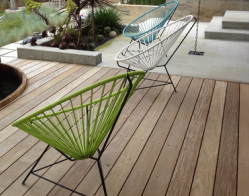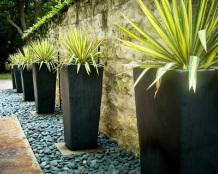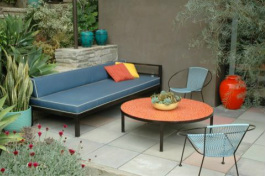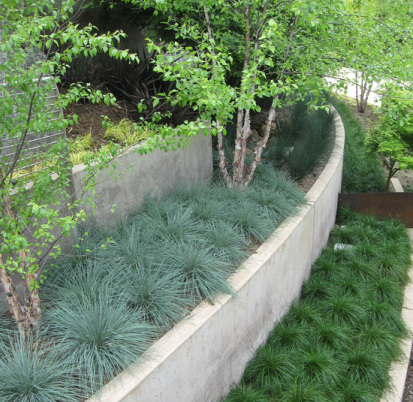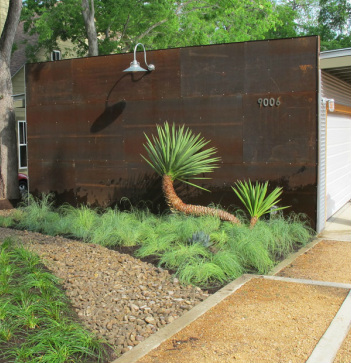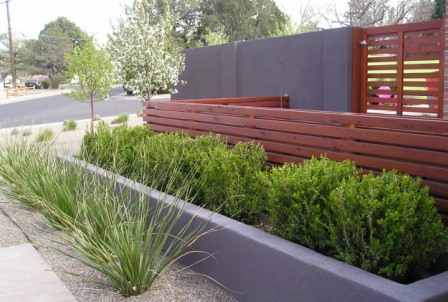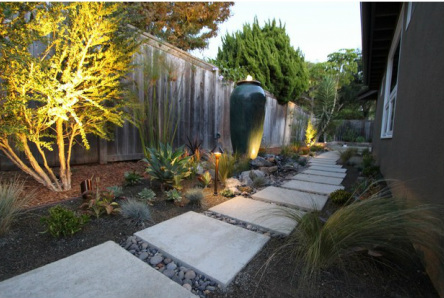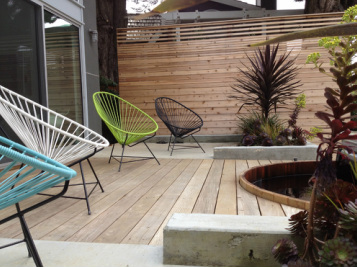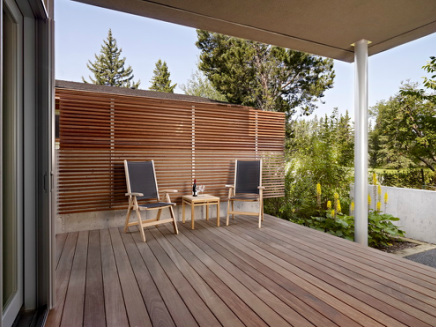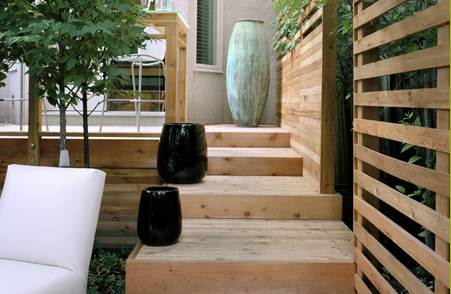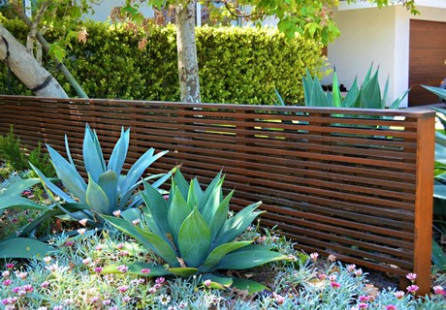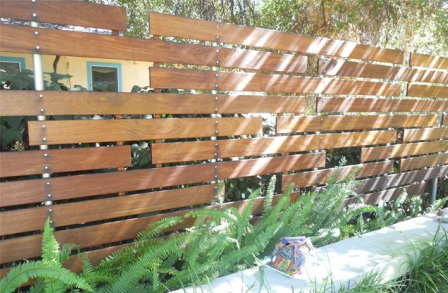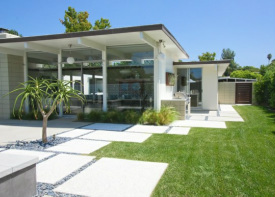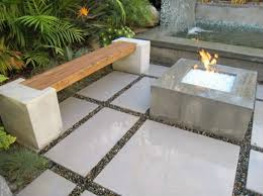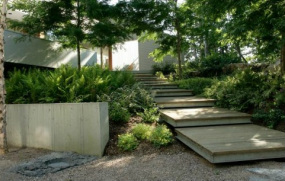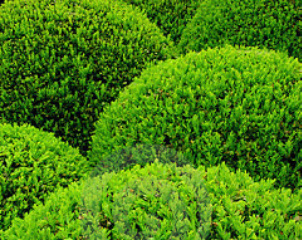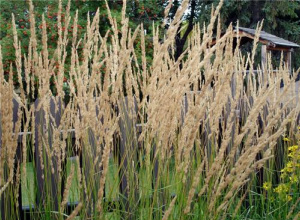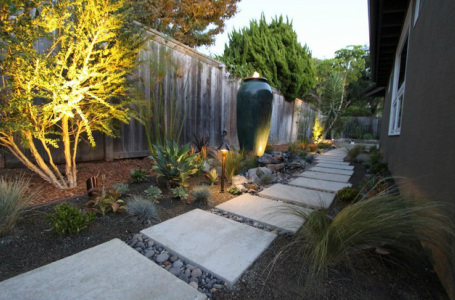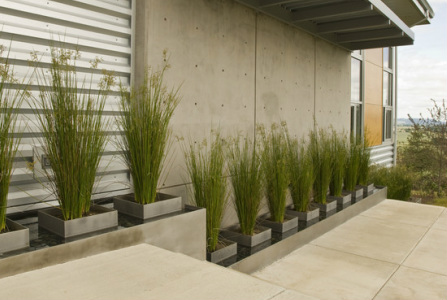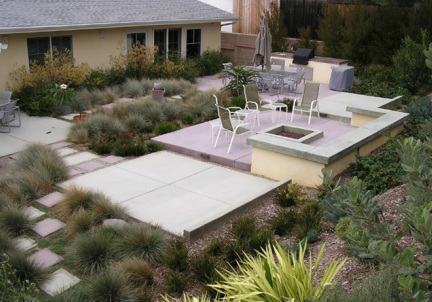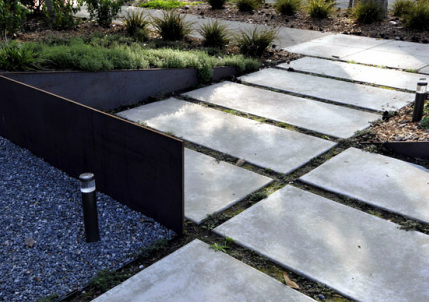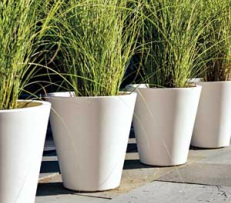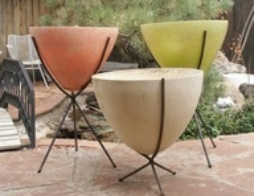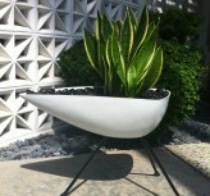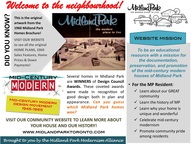The modernists of the past century were optimists. They believed that better gardens meant better living. In the post-war boom that spawned suburbia, houses had a backyard for lounging in as well as a front garden, and modernist landscape architects made the most of both with a house design that annexed the outdoors as living space. Patios, pools, and backyard grills all got a boost from simple, budget-friendly principles of mid-century garden design. Get inspired with our curated modernist landscaping tricks of the trade.
TRANSFORM YOUR VIEW WITH A MODERNIST SHED!
Designed in Scarborough by Summerwood
|
MODERN LANDSCAPING 1-2-3 RESOURCES
1 - INFORMATIVE LINKS: You're just a click away from some useful hot links to help with landscaping, lawn care and plant selections ideal for our local climate. Working with the natural environment helps reduce the time and effort you need to spend in the garden. We are all about enjoying the garden more and working less!
2 - MODERN LANDSCAPING TIPS: Discover modern landscaping design elements that are perfectly suited for your mid-century modern home. By incorporating modern design elements into your yard, not only does it align with your home's architectural style, it typically requires very little maintenance! 3 - PRINT ON DEMAND: Tap on our printable brochures located at the very bottom of this page, for easy information downloading and sharing. These handy brochures are loaded with information and helpful tips on mid-century modernism, landscaping, gardening, curb appeal and more! |
1 - MODERN OUTDOOR LIVING | INFORMATIVE LINKS
TEST YOUR
|
2 - MODERN LANDSCAPING FOR A MID-CENTURY MODERN HOUSE
Modern landscape design ideas for your mid-century modern house
|
Modern landscaping design elements complement the lines, structure and intention of the mid-century modern architectural elements of your house. Incorporate one or a few of these elements to instantly create fabulous modern living!
Famed modern architect Richard Neutra spoke for his fellow designers who pioneered simplified building design during the early 20th century. He said, "Place man in relationship to nature; that's where he developed and where he feels most at home!" |
Famed modern architect Richard Neutra spoke for his fellow designers who pioneered simplified building design during the early 20th century. He said, "Place man in relationship to nature; that's where he developed and where he feels most at home!" The mid-century modern house was designed to have a close integration with nature and was designed to feel bigger by 'borrowing space from the outside'. This was accomplished using ample and strategically placed windows and open floor plans. Having your yard looking wonderful creates a truly positive, zen-like experience for the MCM home owner, one that extends from the inside of your house right through to the outdoors.
|
MODERN LANDSCAPING DESIGN ELEMENTS
GEOMETRIC DESIGN
|
Straight lines, geometric forms and repeating patterns are fundamentals of a modern look. The highly structured form of geometric shapes complements your homes linear attributes.
Rectangle and square shapes help achieve a garden that has a controlled and organized appearance and can be incorporated in a few easy ways.
|
MINIMALISM
When selecting plants, stones, decorative elements and garden furniture, think simple, sleek and not too many patterns. The term, "less is more", applies here. Don't choose ornate furniture or decor. Instead opt for a more simple, plain, streamlined look and consider things like abstract sculptures, glossy metals, and sleek and colourful urns. Patio furniture for a modern outdoor living space should be sleek and refined. Avoid furniture that is ornate or bulky. Modern patio furniture is often made of sculpted metal, wood or plastic.
CONTRAST
|
Modern gardens often rely on hardscaping and structural elements to achieve their minimalist look, with plants used as accents to provide contrast and color.
|
|
FENCES
|
A strategically designed fence can add instant mod style to your yard. One simple way to create a modern fence is to run the boards horizontally rather than vertically. Clean lines help make a fence appear fresh and modern.
Fence posts can be completely hidden giving an effect that makes it look like a solid wooden wall as opposed to a fence. This allows the beauty of the wood to take center stage. Treating a fence with lacquer will bring out the natural wood grain.
Fences can have openings that let light through and reveal the greenery behind, while still providing privacy.
|
The boards can be varying widths and have a slight gaps between them. Creating a subtle pattern with the boards will draw the eye without dominating the landscape.
Simple wood beams in natural colours that complement the outside of your home and look great over patios and are an excellent way to blend your indoor and outdoor living areas. Mod style fences are also often times made out of concrete and metal materials.
|
GARBAGE CONTAINER PRIVACY
CONCRETE
To embrace the industrial elements of modern style, utilize concrete as the prominent material in your landscaping. The unstained, gray color of concrete creates a stark contrast with the natural elements of your landscaping. A concrete patio space, concrete furniture, concrete wall, or concrete planters are all ways to utilize this material.
PLANTS
|
Unlike most garden styles, plant life is not the center element of a contemporary landscape design. Some modern gardens limit plants and flowers to unique planters and pots, leaving most of the design to be filled with hardscape elements and accessories, while some are following a greener trend with lush green walls of evergreen shrubs and mass plantings.
|
PLANT CONTAINERS
In modern landscapes where there is an abundance of pavement and few places to plant into natural soil, containers become a vital component.
- In a modern garden, containers are always overly large, which allows them to contain architectural plants or textural statements.
- With pots as with the plants, remember that more of them is not always better. A series of identically planted pots can be quite effective at highlighting a particular architectural detail or similar pots with different plants can be grouped to create an interesting look that plays off the different blooms or seasonal color.
- Containers are best selected for their precise geometric forms. A box, cylinder or bowl each asks for different contents. In general, contrast the shape of the pot with that of the plant. TIP: Beware of very wide, shallow bowls that look fabulous but may lack sufficient depth for a solid root zone. If too shallow the soil mass may become overheated in summer, causing contents to discolor or dry out very quickly.
- Select containers for their texture and color. Exterior glaze, imprinted pattern or color can make containers a work of art, with the plant sometimes merely an afterthought.

